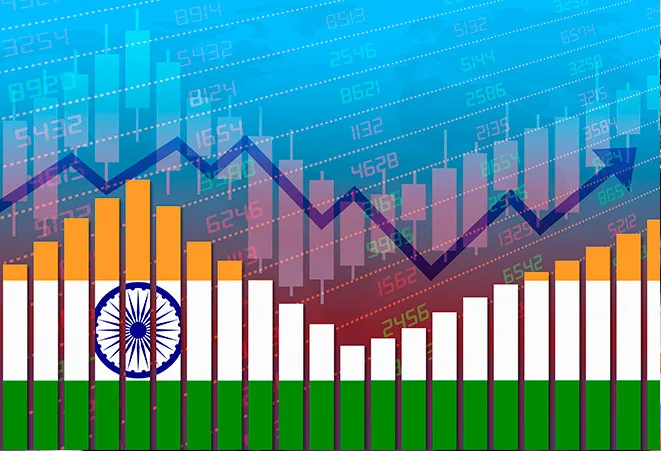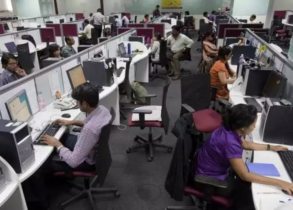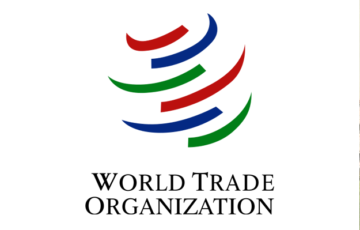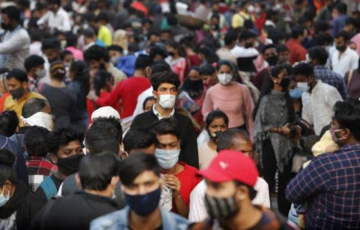ECONOMIC REFORMS IN INDIA
- Economic reforms refer to the significant policy shifts that a country undergoes to transform its economic structure, usually from a predominantly state-controlled or planned economy to a market-oriented economy. These reforms are typically characterized by liberalization, privatization, deregulation, and globalization. They aim to enhance the efficiency and competitiveness of the economy, attract foreign investment, stimulate growth, and integrate the national economy with the global market.
- Economic reforms are a pivotal aspect of a nation’s development strategy, influencing the balance between government control and private sector involvement in the economy. These reforms can fundamentally reshape an economy, steering it towards new growth paradigms.
The Need for Economic Reforms in India
- The urgency for economic reforms in India became pronounced in response to a fiscal crisis and a balance of payments crisis in July 1991. These reforms were aimed at overhauling the Indian economy, which faced several critical challenges:
- Public Sector Inefficiency: Initially playing a crucial role post-independence, the public sector became a source of significant losses due to mismanagement.
- Foreign Exchange Crisis: India’s foreign exchange reserves, vital for critical imports and loan payments, were depleting rapidly, at one point sufficing for only 15 days.
- Trade Imbalance: The growth rate of imports far exceeded that of exports, adversely affecting the exchange rate and weakening the Indian Rupee.
- Government Debts: To finance its expenditures, the government accumulated unsustainable debts from the IMF, private institutions, and banks.
- Inflation: Consistent inflation growth exerted pressure to bring it under control.
- Open Market Preparedness: Despite these challenges, the Indian economy was poised to benefit from adopting an open market model, with a substantial private sector ready to contribute.
- Global and Political Instability: Political instability within India, coupled with the Gulf crisis leading to high oil prices, underscored the need for economic stability through reforms.
- IMF and World Bank Conditions: The acceptance of loans from the IMF and the World Bank was contingent on India implementing the necessary economic reforms.
Transformative Impact of Economic Reforms
- Economic reforms have significantly reshaped the economies that adopted them, offering a pathway to enhanced growth, stability, and integration into the global market. In countries like India, these reforms have been instrumental in transitioning from a predominantly state-controlled economy to one that benefits from the efficiencies and opportunities of the market mechanism, while still striving to achieve a balance between the roles of the state and the market.
- The reforms initiated in India during the late 1980s and formalized through the 7th Five-Year Plan (1985-1990) marked a significant shift in the country’s economic policy. This period, influenced by the Washington Consensus, witnessed the beginning of a series of liberalization measures that aimed to integrate the Indian economy with the global market. These reforms, their nature, implementation, and consequences, as well as the motivations behind them, provide insight into a critical phase of India’s economic history.
Nature of the Reforms
Introduction to Economic Liberalization
- In the 1980s, India began to implement reforms based on liberal principles, characterized by limited deregulation and partial liberalization. The essence of these reforms was to open up various sectors of the economy to private and foreign investments, reduce state control, and increase competitiveness in the global market. These changes were heavily influenced by the Washington Consensus—a set of economic policy prescriptions advocating for free-market capitalism as a path to economic growth.
Key Components of the Reforms
- Limited Deregulations: These involved reducing government control over certain industries, aiming to promote efficiency and competitiveness.
- Partial Liberalisation: This process was marked by opening up the economy to foreign investments and reducing restrictions on private enterprises.
- Heavy External Borrowings: To support these reforms and increase exports, India resorted to significant borrowing from international sources.
Despite an increase in the growth rate, the heavy reliance on foreign loans for costly imports led to an inability to repay these debts timely, contributing to the balance of payment (BoP) crisis of 1991.
Expansion and Deepening of Reforms
- The economic crisis led to a second wave of reforms, broader and deeper, impacting sectors like industry, trade, investment, and agriculture. These reforms were aimed at stabilizing the economy and laying the groundwork for sustained growth.
Were the Reforms Voluntary or Obligatory?
The Role of International Financial Institutions
- Post-BoP crisis, India’s engagement with the International Monetary Fund (IMF) under the Extended Fund Facility (EFF) highlighted the obligatory nature of the reforms. The conditions attached to the IMF loans essentially dictated the economic restructuring that followed. This external pressure necessitated reforms that were not initially planned by the government or demanded by the public.
Political Dynamics
- The PV Narasimha Rao government, with Manmohan Singh as Finance Minister, utilized this externally imposed necessity as an opportunity to implement reforms that lacked widespread political consensus. This period underscored the complex interplay between international financial obligations and domestic political strategy.
Fears Related to the Reforms
Economic and Social Concerns
- Unemployment: Increased competition and cost-cutting measures were feared to lead to job losses.
- Social Sector Expenditure: There were apprehensions about reduced government spending on social sectors, potentially increasing poverty.
- Impact on Local Markets: The reduction in customs duties was expected to flood the market with imports, adversely affecting local industries.
- Agricultural Sector: Liberalization raised fears of neglecting agriculture, leading to food insecurity.
- Skill Gaps: The introduction of new technologies demanded new skills from the labor force, creating anxiety about the future of employment.
Positive and Negative Impact of Economic Reforms
| Positive Impacts | Negative Impacts |
| License-permit Raj Ended: Eliminated bureaucratic hurdles, enabling the private sector to flourish and significantly boosting the growth rate. | Persistent Basic Issues: Failed to address fundamental problems like poverty, unemployment, and lack of infrastructure. |
| Liberalization and Global Trade: Enabled freer participation in global trade, notably benefiting sectors like information technology. | Service Sector-led Growth Without Sufficient Employment: While GDP grew due to service sector expansion, it did not generate the needed employment levels. |
| Telecom Sector Growth: Growth rate increased from 6.3% (1980–81 to 1991–92) to 18% (1992–93 to 2002–03). | Uneven Sectoral Growth: Growth was not uniform across sectors; while telecom saw significant growth, agricultural growth remained stagnant. |
| Openness to Private Players in Ports and Aviation: Resulted in significant growth in these sectors along with airports and allied businesses. | Lack of Formal Sector Jobs: The absence of labor reforms led to a preference for contractual labor, inhibiting the growth of formal sector employment. |
| FDI in Services Sector: Resulted in substantial growth, with the tertiary sector becoming a major growth driver in the economy. | Regional Disparity: Growth disparities among states, with eastern states lagging behind in FDI attraction compared to Gujarat, Maharashtra, and southern states. |
| Industrial Liberalization: Only a few industries now require a license, which has greatly benefited the industrial sector. | |
| Cooperative Federalism and Competition: States compete to attract private investment, fostering economic growth across regions. | |
| GDP and Forex Growth: GDP growth rate and foreign exchange reserves increased, indicating economic strength. | |
| Domestic Production and Employment: More domestic production led to job creation, utilizing cheap labor to produce cost-effective products. |
Redefining the State’s Role in Economic Reform
- The transformation of the role of the state in the economic sphere, particularly through the implementation of reforms, is a complex and multi-dimensional process.
The New Economic Policy and Its Implications
- The introduction of the NEP in India marked a significant shift in the relationship between the state and the market. This policy was instrumental in transitioning from a predominantly state-controlled economy to one where market forces play a more significant role. The NEP facilitated a nuanced balance where the government maintained regulatory oversight while encouraging market efficiency and competition. This dual approach aimed to leverage the strengths of both the state and the market, implementing checks and balances to mitigate the failures of each. The overarching goal was to achieve economic growth, stability, and inclusiveness.
Good Governance Through Policy Formulation
- An essential aspect of the NEP’s success involves the state’s focus on creating policies that ensure transparency and accountability. These elements are foundational to good governance, ensuring that economic reforms are implemented effectively and equitably. Through improved policy-making, the state can facilitate an environment where businesses thrive on merit and innovation rather than bureaucratic patronage or corruption.
The LPG Reforms
Liberalization
- The concept of liberalization, influenced by Adam Smith’s ideas of liberalism, advocates for minimal state interference in the economy, promoting a market-driven approach. This policy became popular in the mid-1970s in Europe and America and was adopted by China in the 1980s. India’s liberalization efforts have reduced the state’s role in economic activities, favoring a more open and competitive market environment.
Privatization and Globalization
- Alongside liberalization, privatization and globalization are critical components of India’s economic reform strategy. Privatization involves transferring the ownership of state-owned enterprises to the private sector, aiming to increase efficiency and productivity. Globalization refers to the integration of national economies into the global economy, promoting international trade and investment. Together, these reforms seek to position India as a significant player in the global market.
Privatization
- Privatization has been a defining feature of economic policy in many countries during the latter part of the 20th century, particularly in the 1980s and 1990s. It signifies a paradigm shift from a predominantly state-controlled economy to one where the private sector plays a significant role. This transformation involves several key processes, including deregulation, privatization of state assets, and the introduction of market reforms in public services.
Forms of Privatization
- Denationalization: This is the complete transfer of state-owned assets to the private sector. The UK’s experience under Margaret Thatcher’s government exemplifies denationalization, where major state-owned industries were privatized. Denationalization represents the purest form of privatization, albeit less common globally.
- Disinvestment: A more common form of privatization, disinvestment involves the state selling a portion of its shares in state-owned enterprises to private investors. This can result in the government retaining control (if less than 50% of shares are sold) or transferring ownership to private hands (if more than 50% are sold).
Broad Spectrum of Privatization
- Privatization, in its broadest sense, includes any policy aimed at expanding the private sector’s role in the economy. This encompasses deregulation (removing government controls), de-licensing (eliminating the need for certain business licenses), encouraging foreign direct investment (FDI), and reducing subsidies. Such measures, although not directly transferring state assets to private ownership, significantly enhance the private sector’s influence in the economy.
De-Licensing
- The reforms abolished the license-permit raj, a system requiring businesses to obtain numerous government licenses to operate. This system, underpinned by the Monopolistic and Restrictive Trade Practices Act of 1969, aimed to prevent wealth concentration but resulted in widespread corruption and inefficiency. The abolition of licensing in 1991 marked a significant step towards economic liberalization, although it did not transform India into a manufacturing powerhouse as anticipated.
De-reservation
- Another aspect of India’s reforms was de-reservation, which opened previously public-sector-dominated industries to private investment. The New Industrial Policy of 1991 significantly reduced the number of industries reserved for the state, marking a shift towards a more inclusive economic model that allowed private sector participation even in sectors previously off-limits.
Globalization
- Privatization is closely tied to the broader phenomenon of globalization, which refers to the increasing economic integration among nations. This process has been facilitated by developments such as the establishment of the World Trade Organization (WTO) in 1994, following the Uruguay round of talks. Globalization is characterized by the free flow of goods, services, capital, and labor across borders, aiming to create a more interconnected global economy.
- India’s economic reforms of 1991, including privatization initiatives, paved the way for its deeper integration into the global economy. By adopting measures that promoted privatization and economic liberalization, India moved towards fulfilling the requirements of globalization, including participation in international bodies like the WTO.
From Liberalization to Globalization
- The journey from state-controlled economies to market-driven ones involves a series of interconnected steps: liberalization (easing government controls), privatization (transferring state assets to the private sector), and ultimately globalization (embracing a worldwide economic system). Each step is essential in moving towards an economy that is more efficient, competitive, and integrated into the global marketplace. Through these processes, countries aim to enhance economic growth, improve public services, and raise living standards.
Generations of Economic Reforms
- The economic reforms in India, initiated in 1991 and evolving over subsequent years, can be divided into different “generations,” each with its specific focus areas and objectives. These reforms have been pivotal in transforming India’s economy from a command-type to a more market-led model.
First Generation Reforms (1991-2000)
The initial phase of economic reforms was primarily aimed at liberalizing the Indian economy, reducing government control, and increasing the role of the private sector. Key areas of focus included:
- Promotion of the Private Sector: By de-reserving and de-licensing industries, abolishing the Monopolies and Restrictive Trade Practices (MRTP) limit, and simplifying environmental laws, the government aimed to stimulate industrial growth and encourage private investment.
- Public Sector Reforms: Efforts to make public sector enterprises more efficient and profitable involved corporate restructuring and partial disinvestment to introduce a degree of private ownership.
- External Sector Reforms: These reforms liberalized import policies, introduced a managed floating exchange rate system, and allowed for both direct and indirect foreign investment, significantly impacting India’s integration with the global economy.
- Financial Sector Reforms: Changes in banking, mutual funds, insurance, and capital markets were intended to increase the efficiency and stability of India’s financial system.
- Tax Reforms: Simplifying the tax structure, broadening the tax base, and modernizing tax administration aimed to increase government revenue and reduce evasion.
Second Generation Reforms (2000-2001 onwards)
Recognizing the limitations of the first generation of reforms in achieving the desired economic growth, the second generation was introduced with a focus on deeper structural changes:
- Factor Market Reforms: The dismantling of the Administered Price Mechanism (APM) for key commodities like petroleum and fertilizers aimed to make pricing more market-driven, encouraging efficiency and investment.
- Further Public Sector Reforms: Greater autonomy for public enterprises, strategic disinvestment, and encouragement for greenfield ventures were steps toward modernizing India’s public sector.
- Reforms in Government and Public Institutions: A shift towards facilitating rather than controlling economic activities, coupled with administrative reforms, aimed to improve the ease of doing business.
- Legal Sector Reforms: Updating old laws and introducing new ones, such as cyber laws, were critical for modernizing India’s legal framework.
- Infrastructure, Healthcare, and Education Reforms: Investment and reforms in these sectors were crucial for sustainable growth and development.
Third Generation Reforms
- Announced around 2002, these reforms focused on making Panchayati Raj Institutions functional and ensuring that the benefits of economic growth reached the grassroots, emphasizing inclusive growth and development.
Fourth Generation Reforms (Conceptual)
- Although not officially announced, experts suggest a fourth generation of reforms that would integrate economic development with advancements in information technology, exemplified by initiatives like Digital India and UPI payments.
Review of Economic Reforms in India
- The economic reforms in India have been characterized by a gradualist approach, marked by incremental changes rather than sweeping transformations. Despite achieving significant progress, the reforms have faced challenges such as delays, lack of consensus among different political entities, and the non-inclusive nature of benefits. Yet, the reforms have generally preferred stability over rapid economic outcomes and have shown a human approach that gradually built consensus among the populace.
Unfinished Agenda of Economic Reforms in India
- The economic reform process in India has been a topic of intense discussion and analysis among economists, policymakers, and scholars. While significant strides have been made since the liberalization efforts of the 1990s, there remains a consensus that the journey of economic reform in India is far from complete.
Partial Reforms and Diminishing Returns
- Economic reforms in India have often been characterized by a “partial reform model,” which, according to many economists, has led to diminishing returns over time. This model suggests that while certain sectors and aspects of the economy have been liberalized or reformed, others remain under tight state control or are inadequately addressed, leading to inefficiencies and stunted growth. The call for another round of serious reforms underscores the need for a holistic and comprehensive approach to economic restructuring, balancing the roles of the state, the private sector, and the market forces.
Core Functions for State in Reform Process
- For reforms to be successful, the state must competently perform several core functions. These include ensuring macroeconomic stability, implementing smart regulation to foster competition and innovation, correcting market failures when they arise, redistributing income efficiently to reduce inequalities, and supplying public goods and services effectively. Each of these areas presents unique challenges and opportunities for reform, necessitating careful planning and execution.
Key Areas Needing Radical Reforms
- State Ownership: The issue of state ownership, particularly in Public Sector Enterprises (PSEs), is a significant concern. Many PSEs continue to underperform, sustained by government support despite considerable losses. The argument for privatization, as opposed to mere disinvestment, is strong, especially given the poor governance and inefficiencies plaguing public sector banks.
- Employment Generation: Addressing the shortage of quality jobs is critical for economic and social stability. With most of the workforce in the unorganised sector and quality jobs scarce, reforms must target infrastructure development, ease of doing business, skill training, and revising outdated labour laws to encourage job creation.
- Deep Fiscal Adjustments: Fiscal reforms are needed to address inefficiencies in taxation and government spending. The introduction of GST was a step forward, but further rationalization of tax rates and exemptions, along with addressing market-distorting subsidies and inefficient PSEs, is crucial.
- Quality of Education: Despite higher enrolment rates, the quality of education remains a significant challenge. The focus should shift from merely completing the curriculum to improving educational outcomes, addressing teacher absenteeism, and leveraging private sector efficiencies.
- State Capacity: The capacity of the state to deliver services and carry out its functions has been declining. Issues like corruption, vacant posts in critical services, and inadequate human resource management within the government apparatus need urgent attention.
UPSC PREVIOUS YEAR QUESTIONS
1. With reference to the Indian economy after the 1991 economic liberalization, consider the following statements: (2020)
1. Worker productivity per worker (at 2004-05 prices) increased in urban areas while it decreased in rural areas.
2. The percentage share of rural areas in the workforce steadily increased.
3. In rural areas, the growth in the non-farm economy increased.
4. The growth rate in rural employment decreased.
2. Which of the statements given above is/are correct?
(a) 1 and 2 only
(b) 3 and 4 only
(c) 3 only
(d) 1, 2 and 4
3. In the context of any country which one of the following would be considered as part of its social capital? (2019)
1. The proportion of literates in the population.
2. The stock of its buildings, other infrastructure and machines.
3. The size of the population in the working age group.
4. The level of mutual trust and harmony in the society.
4. How globalization has led to the reduction of employment in the formal sector of the Indian economy? Is increased informalization detrimental to the development of the country? (2016)










